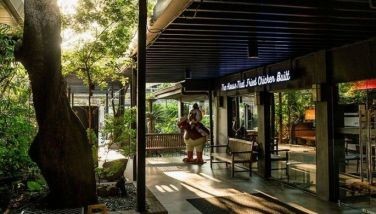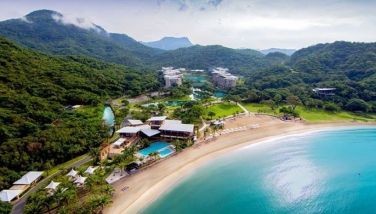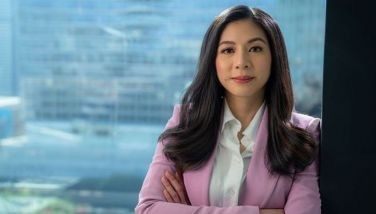Museums matter
It was an unexpected compliment, a note of gratitude. While exploring New York’s museums and galleries in nearby states, my children, now young adults, thanked me for always bringing them to these places of wonder.
Half pleased and half amused, I ribbed them of how as kids, they would react in unison with “Again?” eyes rolling, each time I enthusiastically say, “We’re visiting a museum!” They defended it was only their initial reaction. Once inside the building and their exploration begins, particularly with interactive displays, “Again?” magically transforms to “Again!”
In Hong Kong and especially in China, we were never short of museums to marvel at, mostly for free. We only had to present our resident’s ID. Beijing is the center of massive galleries such as the National Museum, various exhibition halls inside the Forbidden City, the Museum of Natural History and more. We flew to as far as Shaanxi province and braved bitter winter to visit the Terra Cotta Warriors On-Site Museum and took the bullet train to Tianjin to visit Emperor Pu Yi’s ancestral home turned into a museum.
One of the first things my family did in Indonesia was to visit its ancient capital, Yogyakarta. We did not only hike Borobudur at 4 a.m. to patiently anticipate and witness the glorious sunrise atop the temples at the crack of dawn. We also wished to slowly immerse into the culture and traditions of our new host country. It was the start of many more discoveries: Monas, Taman Mini, Fine Arts and Ceramic, Jakarta History, Banks Indonesia, Mandiri Museums and more. There are even museums for wayang (shadow puppets), kites, batik (Indonesia’s iconic fabric), not to mention Museum MACAN or Modern and Contemporary Art in Nusantara, where we reveled at the masterpieces of eclectic Japanese artist, Yayoi Kusama. At MACAN, my father found a painting of our National Artist Fernando Amorsolo neatly mounted among the works of equally eminent painters.
My daughter, the more opinionated one, spoke of how perhaps their exposure to museums had largely influenced her aspirations and knowledge of things she didn’t learn from school or from friends. She recalled how their first visit to our National Museum and encountering the Spoliarium had helped validate her ancestry and identity as a Filipino.
Spending time at Fort Santiago, my children had a deeper grasp of the heroic saga of Jose Rizal, made more profound as they walked along the replica of the footsteps of our national hero prior to his execution in Bagumbayan. The experience became more relatable, albeit entertaining, when at another time, we joined the compellingly theatrical tour of the late cultural activist, Carlos Celdran.
As a mother of third culture kids or TCKs (TCKs are children who grew up in other countries and were raised in a culture different from their parents), it is not only my filial responsibility but also my patriotic duty to ingrain in my children a deep love of our country while remaining focused on why it is equally imperative to respect the norms and traditions of our host country.
And museums are the definitive places, adventure grounds, hands-on classrooms or larger-than-life textbooks that direct us towards this purpose. Museums connect the past to the present and, in our case, permit us to appreciate realities beyond our daily encounters as global nomads.
Which is why when returning home after our foreign posting, our re-acculturation agenda centered on immersive travels to places like Cebu, Bohol, the hubby’s Ilocos region and mine in Bicol. In all these, museum visits were a must. Casa Gorordo or Museo Sugbu; the Baclayon Museum in Bohol, which I was told has been renovated to world-class standards, therefore merits a revisit; Casa Crisologo in Vigan and our Sorsogon museum during its early stage.
Occasional visits to the Ayala Museum, where we availed of a family membership, were a whole lot of help. The diorama served as an instructive medium to reinforce teaching of history through comprehensive narratives and three-dimensional images depicting milestones of our country’s past.
Before coming to New York, we revisited “The 1730 Jesuit House” in Cebu. The almost 300-year-old house turned museum, which also doubles as hardware – yes, it’s part of the character – is owned by the Jesuit-educated Jimmy Sy. Aside from its historical significance as the original residence of the first Jesuit settlers in our country, it is a repository of ancient artifacts and a gallery that showcases the Jesuits’ pioneering vocations in the field of evangelization and education.
Growing up and attending school overseas, our children’s appreciation of our country’s history was inadequate. While we had occasional events in the embassy to supplement their learning of our culture and heritage apart from what we tried to model at home, I think museum exposures solidify what an expert says about them: “They inspire, elevate, reveal something.”
Museums matter and I’m saying this not only out of my experience from addressing the unique needs of my children. I say this as a parent, a citizen and an educator who has marvelously benefited and is still endlessly profiting from such encounters. Should museum visits therefore be integrated into our curriculum to help shape the consciousness of the young?
I was in the middle of writing this piece when I read about a planned presidential museum in Baguio, quoting First Lady Liza Marcos-Araneta that “the gallery aims to foster unity among Filipinos.” An important guest who I recently toured around New York’s major museums spoke proudly and positively of how museums are now regarded as places of interest in our country for domestic and international tourists.
In her book, “It Takes a Village And Other Lessons Children Teach Us,” former first lady Hillary Rodham Clinton writes: “A first step in teaching children affirmatively is to give them a strong sense of identity rooted in their heritage.” Museums provide the gateway towards this strong heritage.
- Latest
- Trending


























